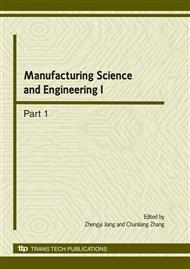p.75
p.81
p.85
p.90
p.96
p.100
p.107
p.111
p.116
The Effect of Entrance Temperature on Texture and Microstructure Development in Cold Mill Rolled 85/15 α-Brass
Abstract:
With the entrance temperature at 300°C, cold mill rolling produced deformation texture transition from brass type to copper type in worked 85/15 α-brass. From the texture and TEM scale microstructure evidence, it is suggested that, rather than deformation twinning, recovery and easy cross slip favor in the deformation process, as the interior working temperature falls into the texture transition range proposed by Tranchant.
Info:
Periodical:
Pages:
96-99
Citation:
Online since:
March 2010
Authors:
Price:
Сopyright:
© 2010 Trans Tech Publications Ltd. All Rights Reserved
Share:
Citation:


